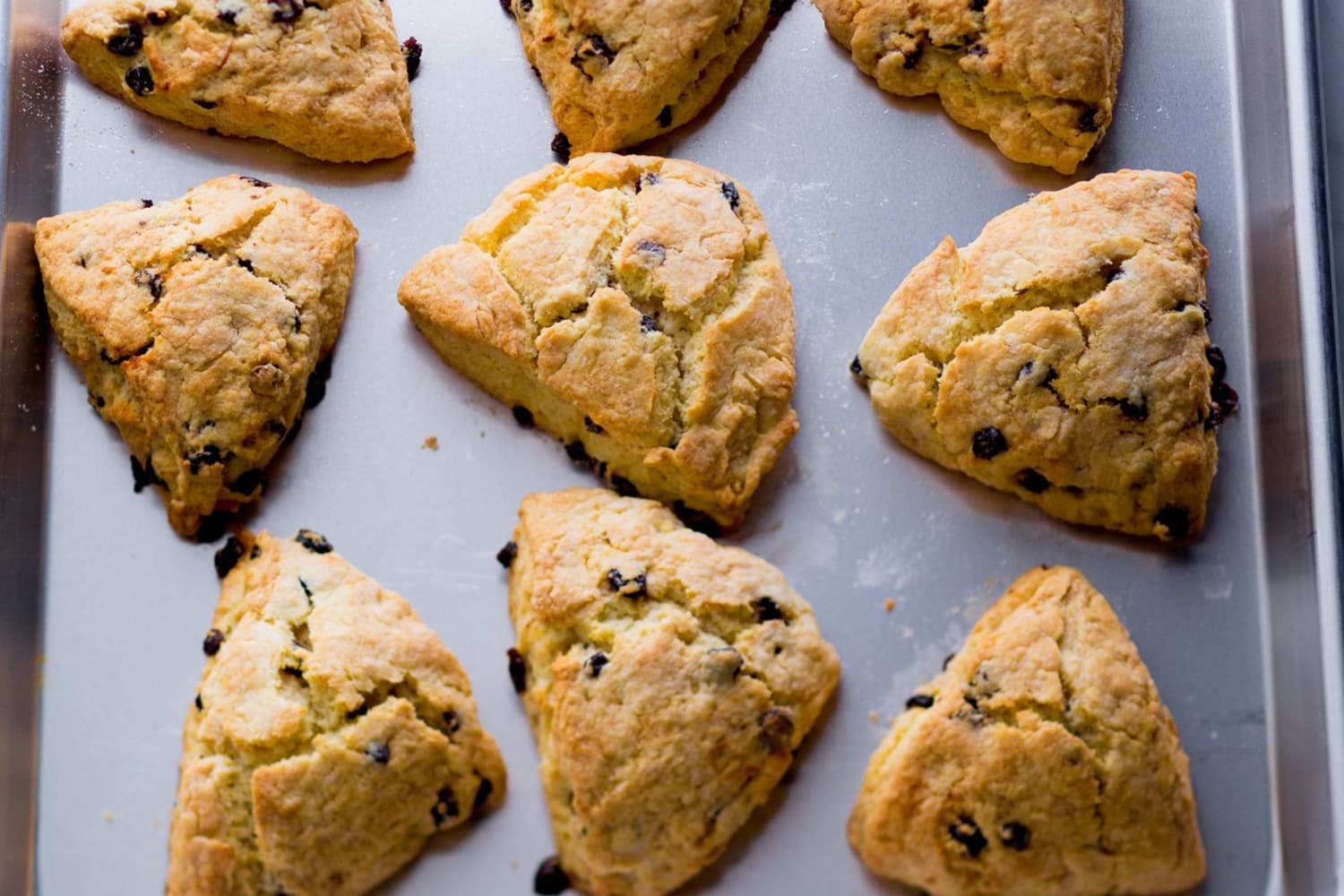Products You May Like

We independently select these products—if you buy from one of our links, we may earn a commission.
I posed this question to family and friends on Facebook: What’s the difference between scones and biscuits? Within hours, more than 50 responses had rolled in from Americans, Brits, Canadians, and Australians. Friends of friends I didn’t know were getting heated in reply threads, posting long comments complete with photos to prove their points.
Apparently, this question strikes a nerve. The reason it makes for such a hot debate is — at least where ingredients and technique are concerned — biscuits and scones are actually very similar.
What’s the Difference Between Biscuits and Scones?
Recipes for both include minimal ingredients: flour, fat, some kind of dairy, leavener, salt, and sometimes a flavoring element or two. They both get their loft from the addition of chemical raising agents — baking soda and/or baking powder — instead of a sourdough ferment or commercial yeast. Cold fat is imperative for both, and they each benefit from not being handled too much, lest they become tough. Both generally bake quickly, for only 15 to 20 minutes, in a hot oven.
In The Modern Baker, author Nick Malgieri explains that both biscuits and scones are relatively recent additions to the baking canon, having come about in the mid-19th century when chemical leaveners became widely available. These similarities and shared history mean that there’s something of a gray area between the two, and your opinions on the matter have everything to do with your cultural identity.
For those in Commonwealth countries — England, Scotland, Ireland, Canada, Australia, Wales, and so forth — the word biscuit signifies something most Americans would call a cookie, and a scone is, well, something similar to an American biscuit: round, bready, and only slightly sweet. (Take a minute to Google “British scone” to see what we’re talking about.) Most Americans, on the other hand, think of a scone as a sweet, crumbly, triangular breakfast pastry and a biscuit as fluffy or flaky and savory.
Is this a gross generalization of the way the United States views these foods? Yes. Although there is far more nuance in the food cultures of individuals, these generalizations reflect broad-strokes U.S. food culture — scones as they’re presented at Starbucks and the biscuits on the menu at Popeye’s — one that transcends regional differences to create something of a broad consensus, even if that’s inherently imperfect.
American biscuits can be round, square, rectangular, or blob-shaped. They can be split and stuffed for a breakfast sandwich, smothered with sausage gravy, or served as an accompaniment to fried chicken. Some versions are flavored with cheddar, chives, or black pepper. Sure, you can put some honey butter on there if you want, but the biscuit itself falls in the same savory carb category as bread, a roll, an English muffin, and most bagels.
An American scone, on the other hand, is itself a sweet food. Most often triangle-shaped, scones are crumbly and flavored with nuts, fruit, chocolate, or aromatic elements like citrus zest, herbs, or spices. Very often they are topped with some kind of sweet drizzle or glaze. They’re firmer and more crumbly than a muffin, and we often eat them unadorned alongside a cup of coffee or tea for breakfast or a mid-afternoon snack.
Dr. Kate Thomas, a professor of Nineteenth-century British literature, culture, and food studies says, “I think of an American scone as sweet, cake-like, and with lots of ‘inclusions,’ much more like the staple of the British tea table, the rock cake. A British scone is not sweetened (at all, in my opinion) and shouldn’t (in my opinion) have anything in it, though some ruffians put raisins or sultanas in them. But plain makes a much better pillowy base for piles of clotted cream and jam. And then there’s also the cheese scone which is a splendid fellow and obviously walks back my ‘no inclusions’ rule.”
While some insist that particular types of dairy — whether buttermilk or heavy cream — align more with one or the other, there are recipes out there that offer examples of each. One thing that appears relatively consistent? Eggs generally have no place in a biscuit, whereas they’re fair game in scones. And technique-wise, we often fold biscuit dough to create laminations (layers of butter) for flakiness.
“Scones are made with cream and eggs,” said Katina Talley, owner of Sweet Magnolias Bake Shop in Omaha, Nebraska. “They’re sweeter, drier, and may contain fruit. Biscuits are typically made with buttermilk and no eggs. They’re flaky, soft, and traditionally not sweet.”
While purists might insist upon this rigid distinction, it seems clear that the two terms are largely a matter of interpretation — and location. An Australian friend who has long lived in the U.S. explained the difference between biscuits and scones in a single, searing word: Hemispheres.
